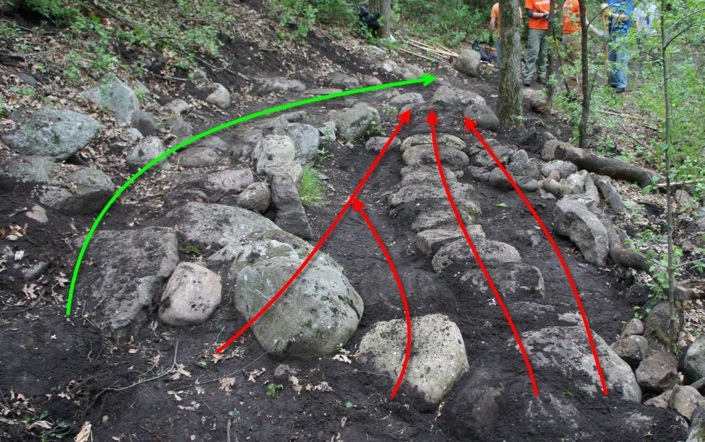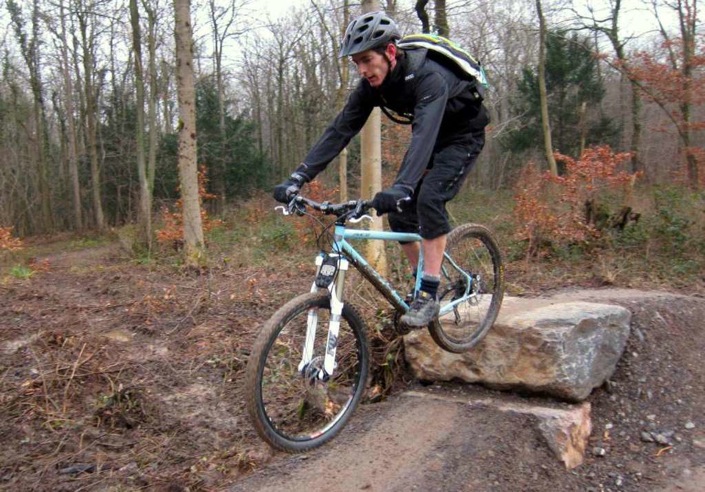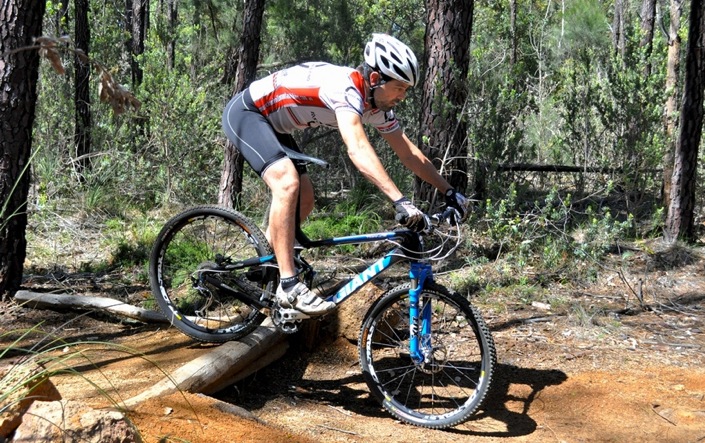Have you ever watched someone else mountain biking and marvel at their seemingly effortless speed and flow on the bike? Stemming from some of our MTB Skills articles, we've been asked to focus on some particular skills, mainly to do with enhancing trail flow and increasing overall riding speed on the trail.
HEADS UP! For an overview of some key bike handling skills, check out
"Finding Flow: Perfect your mountain bike cornering technique"
Let's take a look at three specific points and talk you through the "do's and dont's" to help you nail your next mountain bike ride.
LINE CHOICE

This term refers to the concept of knowing which line you want to ride before you actually get there. Line choice is a skill that comes through lots of practice and a few mistakes, but nothing you can't handle! Drop your bike at the side of the trail and walk towards your favorite rock garden or similar. Look at the puzzle in front of you, and try to imagine where you would ride to miss the biggest bumps, roots and rocks. This is how you choose a line when you ride that same section, except you have less time to figure it out...

TIP: Make sure your line is as straight as possible. Taking major turns left and right and back again isn't going to help you maintain your speed or trail flow. Be smooth and choose the most direct line you can while missing the big obstacles.
GRAVEL CORNERS AT SPEED
Gravel is everywhere in the world of MTB, so you're going to struggle if you don't get along well with it. Some riders really struggle with the feeling of riding on gravel, as the bike tends to squirm and slide underneath you (especially when you corner).
Next time you hit a gravel corner, remember to allow the bike to choose it's own path. Fighting to keep the bike on track will result in some more squirming and sliding, so just relax and go with it. Check these tips out:
- Brake before the corner, entering slower rather than faster
- Release brakes, and look where you want to go
- Enter corner, and lean the bike over while you stay upright - very important
- Spot the exit of the corner, and push the bike away from you as you exit the corner.

TIP: Keep your bodyweight centred, otherwise your front or rear wheel will have less downward force on it and subsequently less traction.
DROP OFFS - TO DROP OR TO ROLL?
Drop offs are something you grow to love on the trail. Once mastered, they give you an opportunity to ride with some flare, show off to mates and ultimately get that "whooop!" feeling in your stomach as seconds turn into hours. To practice this skill, start with a small drop such as your curb. The concept is universal, so start small and work your way up.
Roll Down
As you approach the drop, lean back off the back of the seat as if to sit on the rear tire. Hold on tight with your hands and allow the front wheel to roll off the drop and onto level ground again. Your back wheel will follow, as will you. Leaning back prevents you from going over the handlebars, so lean back as much as you want!
Practice this technique on a flight of stairs (remember, start small) and you'll quickly get the idea.
Drop Off

The same obstacle can now be cleared in a more advanced way, as you clear the drop completely instead of rolling off it. As you approach your small drop, keep your weight centered on the bike. Stand up, and then straighten your arms as you throw your weight back and pull the front of the bike up with you. The critical part here is this - push the bike away from you as you lean back, as it propels the bike off the drop and helps get your weight even further from the front of the bike. If you can not do this successfully off a small curb, then you will not do it on the trail, so again, start small and work your way up! Land with both wheels at the same time. If you do this 5 times in a row, move onto something bigger.

TIP: Do not roll down drops that are too big - you can see if there are chainwheel marks on the edge of the obstacles you're dropping off. This is indicative of others suffering the fate you're avoiding. Rolling off a drop that's too big will result in your chainwheel catching, and you potentially eating dirt.
So there you have it, get out there and try some new skills. You can teach yourself all these skills purely through practice on your local trails or even in your neighborhood. Keep in mind that you're learning, so be prepared to make a few small mistakes along the way. And last of all, good luck!



